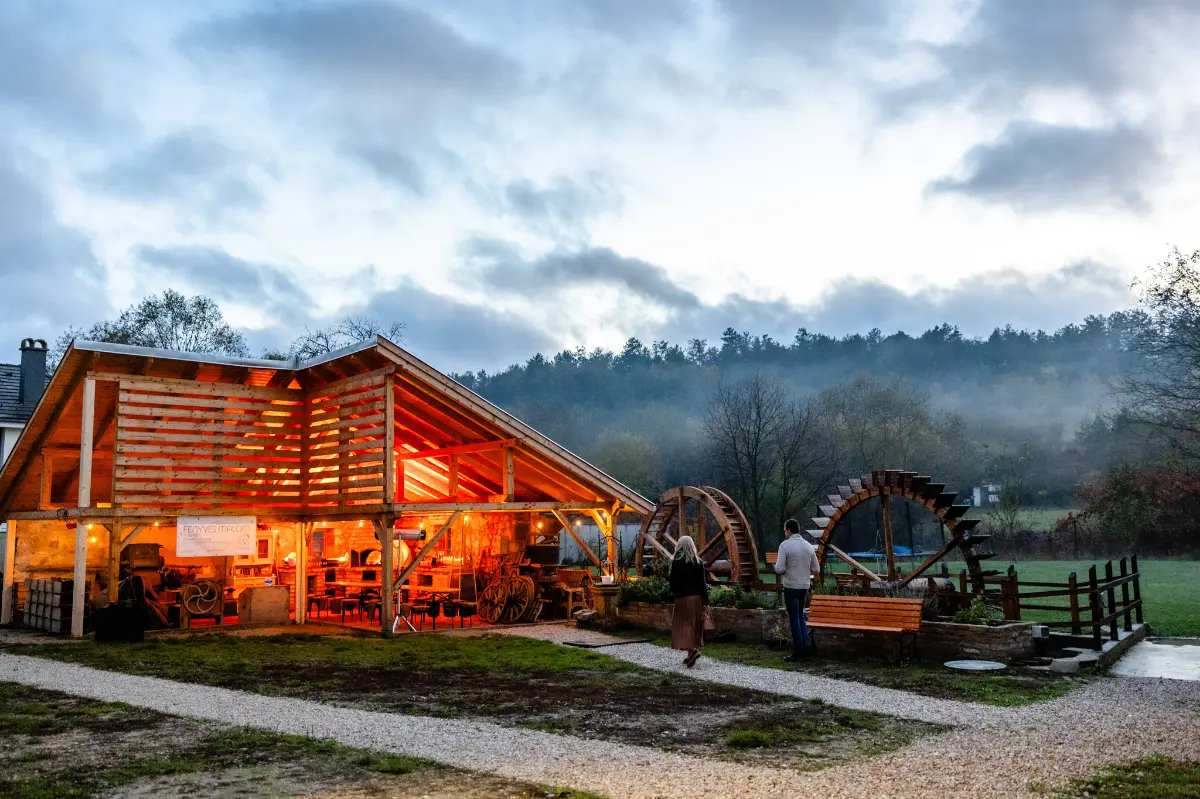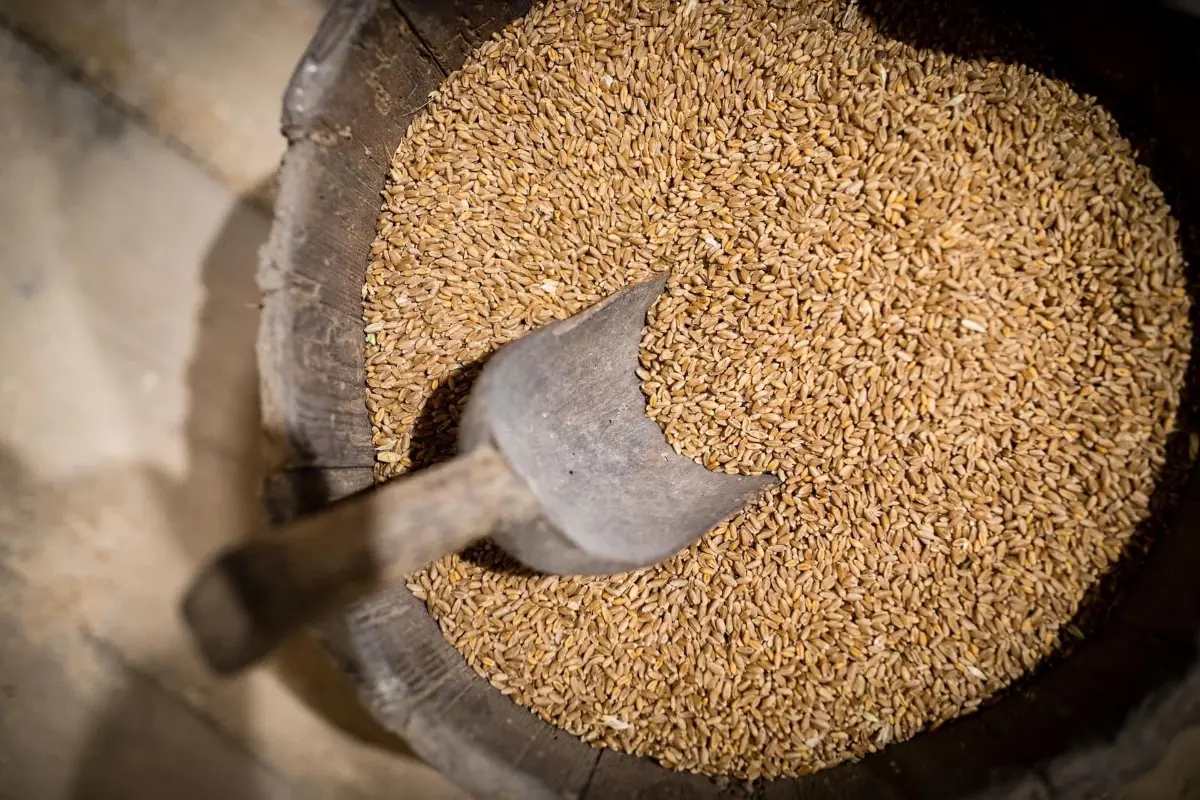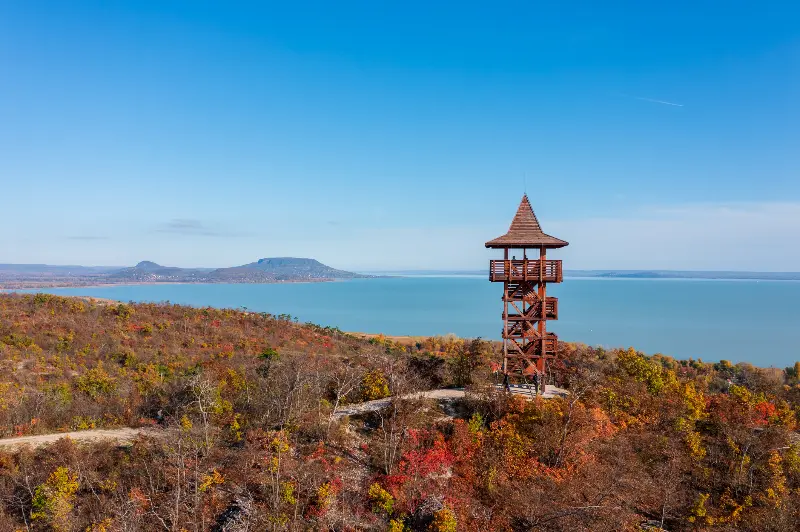
Helyszín címkék:
Fenyves Mill – Let’s get into the miller’s skin in Veszprém!
Kilár Boróka
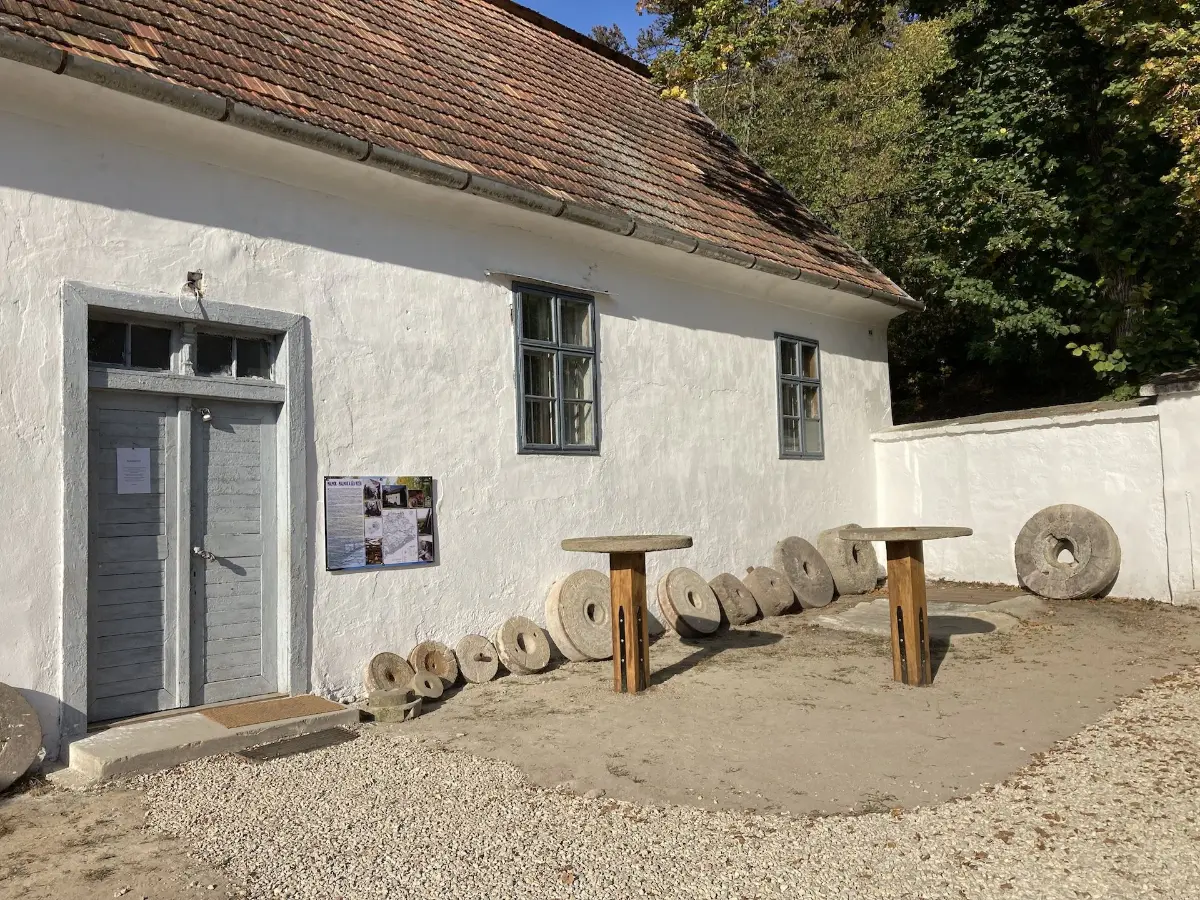
If you sign up for the Fenyves Mill’s special programmes and don’t mind leaving with a mouthful of flour and a whole lot of experiences (and flour sacks...), you can expect: an interactive mill history exhibition, a visual tour, craft and children’s activities, and much more – all within the walls of a mill that is over a hundred years old.
Veszprém, the “city of mills”?
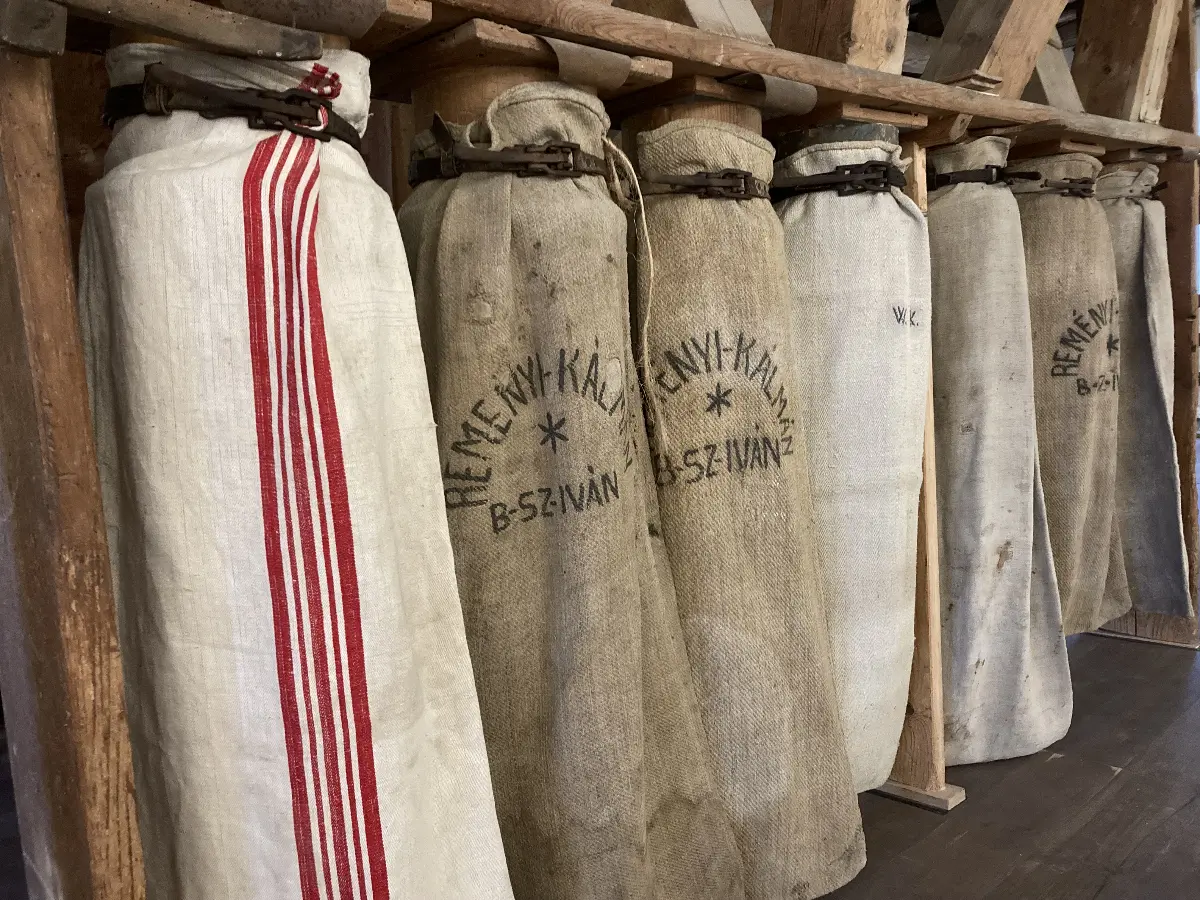
Although Veszprém is best known as the “city of queens”, it could also have been called the “city of mills”. Along the Séd Stream, which meanders at the bottom of Veszprém Castle, more than ten mills were already in operation in the Middle Ages. Not only was grain milled here, but there was also a plank mill, a tilling mill and a stone breaking mill. In the 19th century, we know of a total of 15 mills on the Veszprém stretch of the Séd Stream, of which three are now known only by their location. In 1951, all the mills in Veszprém were nationalised, and most of the buildings and equipment were destroyed. Fortunately, a few mill buildings have survived, but all but one are now restaurants, hotels or residential buildings.
The only exception is in Fenyves Street, and thanks to careful hands and a lot of work, it can be used to grind grain again.
What does the mill tell you about?
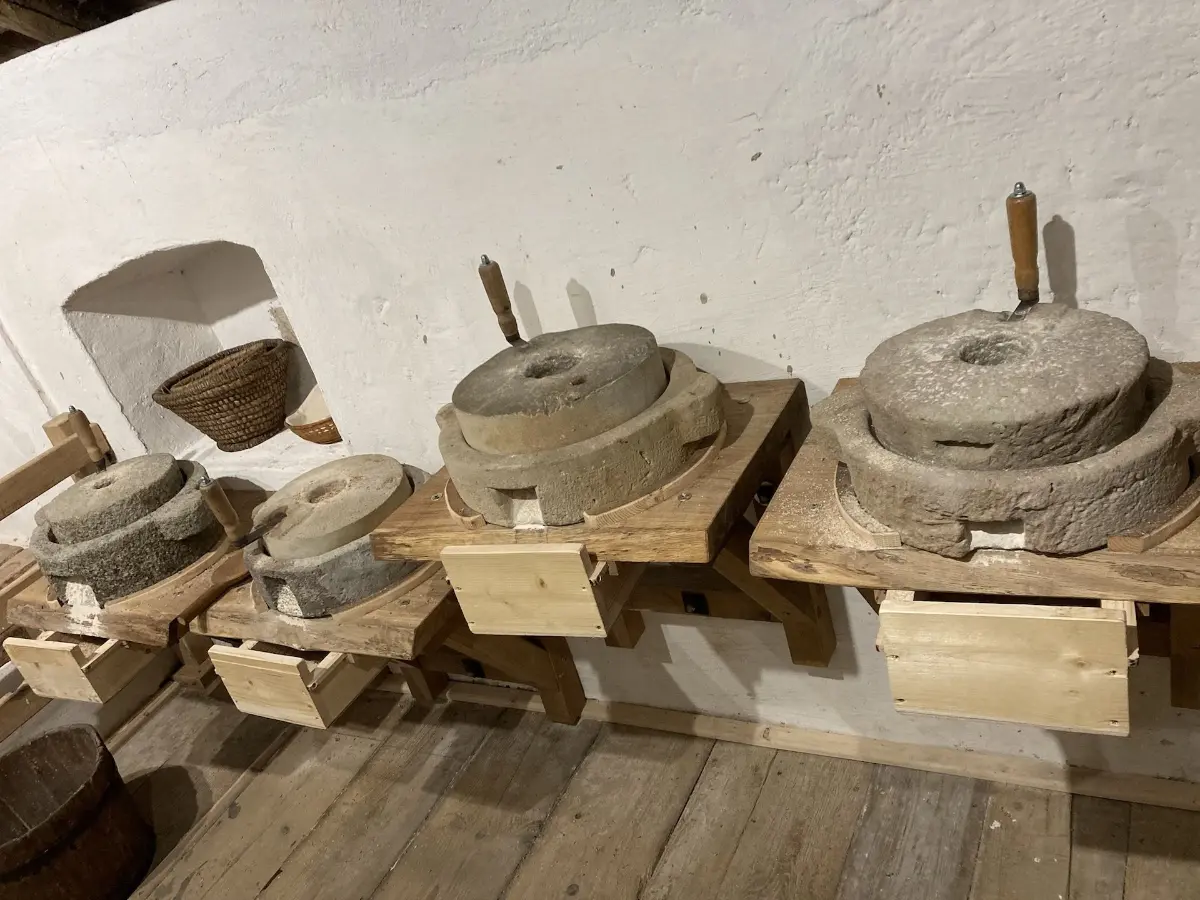
As soon as you enter the yard of the Fenyves Mill, it becomes clear that you have entered another world. There are millstones everywhere, each one a little piece of history. They were indispensable tools of the old life. They took several weeks to prepare. They could weigh up to 500 kilograms. A tour of the mill history exhibition gives you an idea of what life as a miller must have been like in the past. The mill has many stories to tell, starting from the early 1840’s when it was built. Wheat was milled here with great diligence until 1951. Then the mill paused for a while. And although later the former owner, the Buday family, got it back, and for a while they could still grind in it, eventually the water was drained away due to the Séd Stream’s basin regulation; and the mill could no longer be operated without water. The last miller who lived here, Zoltán Buday, died in 1999. Then the mill fell into a Sleeping Beauty-like sleep, slowly covered with dust and weeds...
The miller is the handyman, but the mill restorer too!
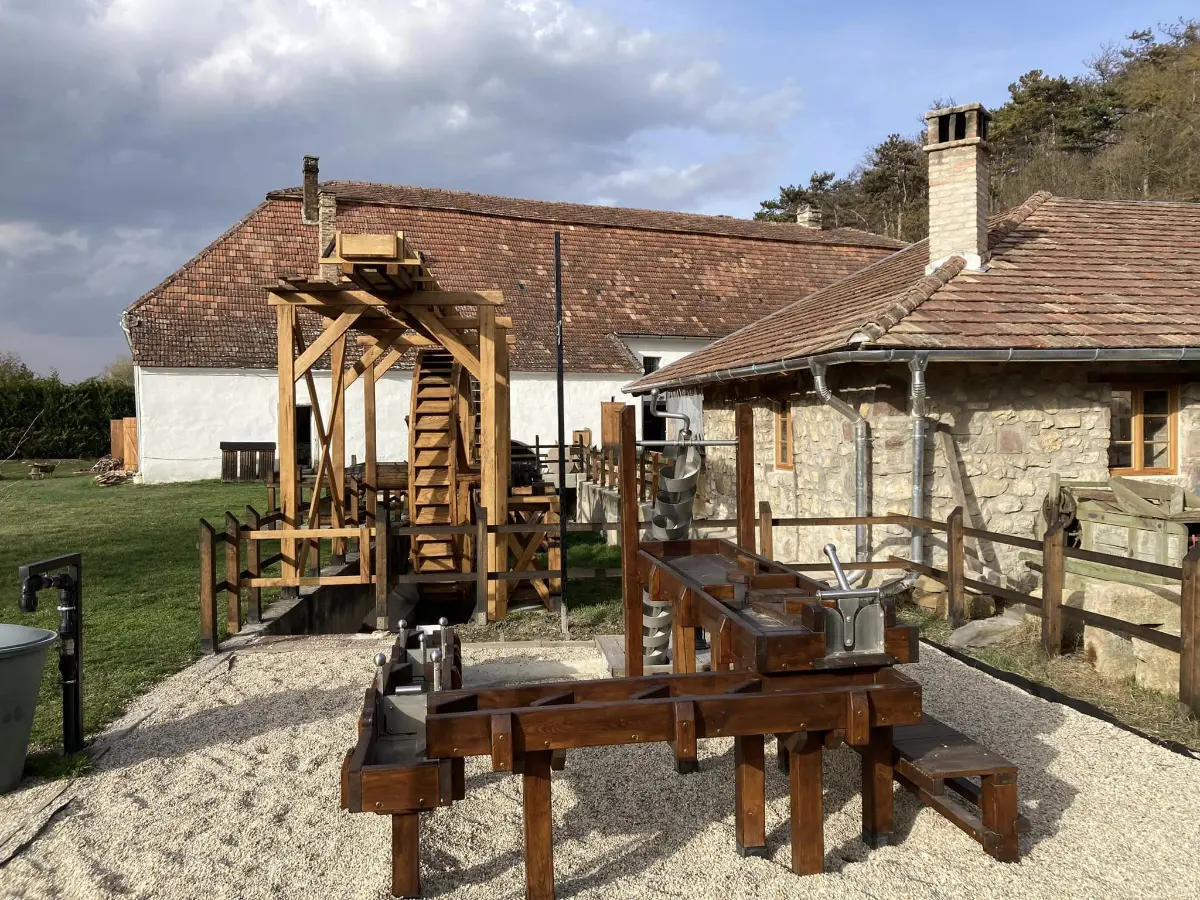
In 2019, the mill woke up from its slumber: the neglected, dilapidated building was bought by mill restorer Péter Tamás, whose knowledge and handiwork have been praised by several renewed mills in the country. The new owner has put his heart and soul into saving this mill inside and out for posterity. Fortunately, the internal mill machinery is almost entirely intact, so the tours allow you to see the original mill structure in action. Peter and his assistants will even pour it down the pit for us! The exhibition is interactive: you can follow the wheat’s journey from milling to baking, try out the old tools, grind on the hand mills, sift flour and learn the ins and outs of milling.
Out in the middle of the yard, another surprise awaits us: two huge mill wheels. They help you see the difference between a bottom-tapped and a top-tapped mill wheel in operation. Peter also tells us where and why the mill wheels were originally located in the mill.
Let’s bake it!
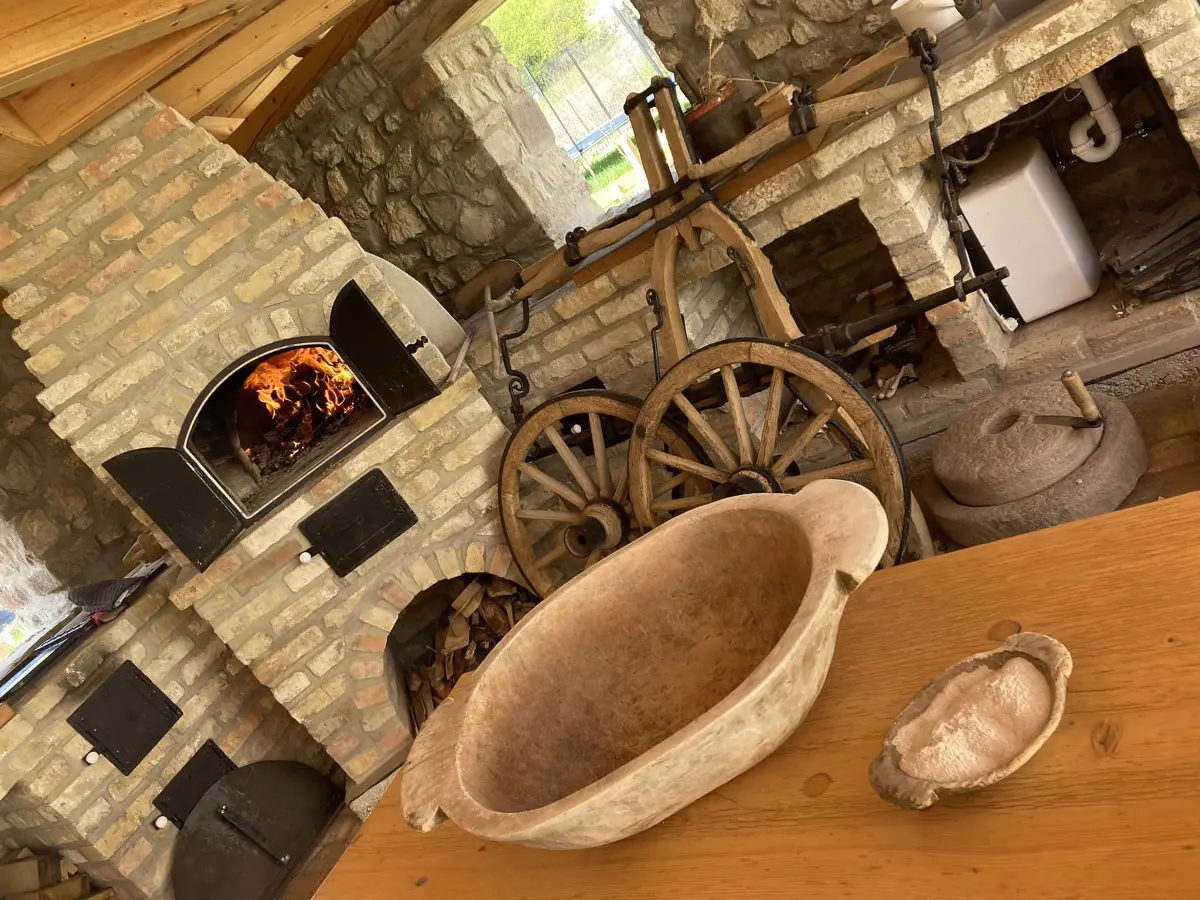
In the miller assistant’s room, there is an activity room, the Mill Workshop, where more experiences await us. This is the home of boundless creativity and crafts, but the large table inside is also perfect for making pasta. The owners of the mill try to enhance the mill experience for us by organising events and craft activities. In the courtyard oven, you can bake fried bread dough, bread and, in winter, your own horn cakes. Of course we will also be responsible for the dough kneading. If you want to learn more about the world of oven baking, you should also sign up for a sourdough workshop. And don’t leave the family at home either, because everyone can have fun at the mill: for example, children have a water playground in the garden. With the help of wooden and metal tools, even the little ones can experience the power of water.
The Fenyves Mill is not a traditional monument, but a home to stories and memories. It has heart and soul: the people who work in it. They allow us to be part of a world that was part of everyday life 100 years ago, but has almost disappeared by now. If you are in Veszprém, let’s visit this mill and preserve our old traditions together, for example over a crispy oven-baked fried bread dough!

